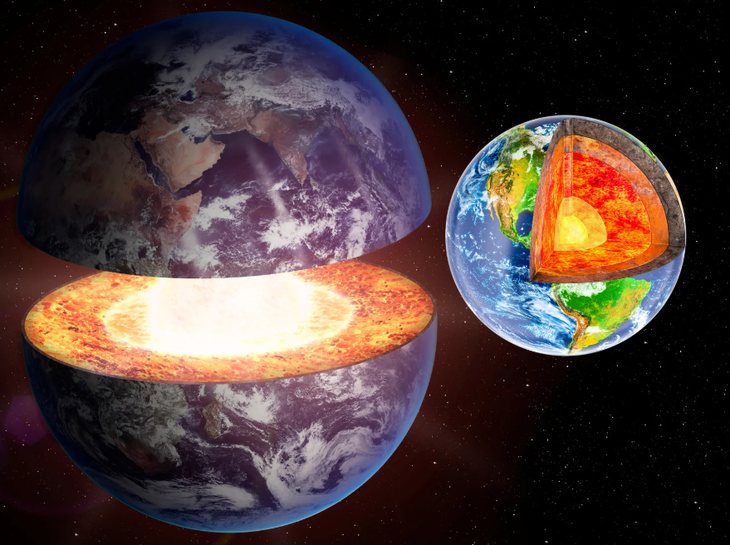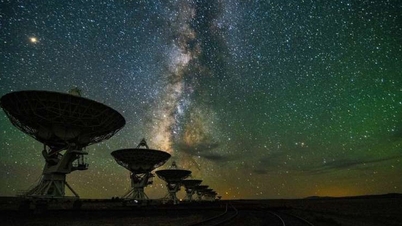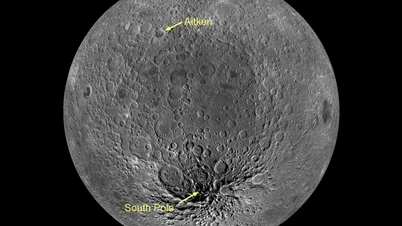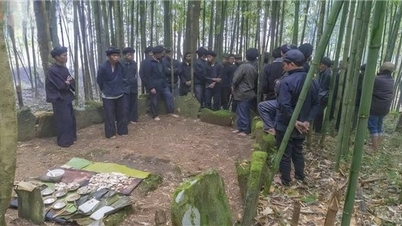
The deeper you go into the Earth, the higher the temperature - Photo: AI
The Earth is structured like an onion with many layers. From the outside in, we have the crust (where humans live), then the mantle which is mostly solid rock, then the outer core of molten iron, and deepest is the inner core of solid iron, with a radius 70% the size of the Moon.
The deeper you go, the hotter the temperature gets, in some parts of the core the temperature can reach more than 6,000°C, equivalent to the surface temperature of the Sun.
The Earth's crust is "drifting"
Just as doctors use ultrasound to look inside the human body, scientists use seismic waves from earthquakes to “look” inside the planet. This allows them to discover structures beneath the layers of rock we see every day.
The crust and the upper part of the mantle are bound together to form the lithosphere, a rigid layer about 100km thick. This layer is not continuous, but is divided into giant tectonic plates like pieces of a puzzle, for example: the Pacific plate, the North American plate...
These plates are constantly moving, sometimes very slowly, sometimes suddenly, causing earthquakes, volcanoes and the formation of new mountain ranges. It is this movement that has contributed significantly to the evolution of life on Earth, forcing organisms to constantly adapt to changing environmental conditions.
The source of heat from the earth
At a depth of about 100km, temperatures have reached 1,300°C. Deeper down to the boundary between the mantle and the outer core, temperatures are close to 2,700°C. And at the boundary between the outer core and the inner core, temperatures reach an extreme of more than 6,000°C.
So where does all this heat come from? It doesn’t come from the sun. Although the sun warms us and all the plants and animals on the surface, its light doesn’t penetrate miles into the planet’s interior.
According to scientists, there are two main sources of heat: heat from the time the Earth formed and radiation from elements deep within the Earth.
4.5 billion years ago, Earth was formed from a giant cloud of gas and dust called the solar nebula. During the collision and merger of small planetesimals, a huge amount of heat was generated, enough to melt the entire planet.
Although some of that heat was released into space, most of it was trapped inside the Earth and remains there today.
A large part of the remaining heat comes from the radioactive decay of radioactive isotopes such as potassium-40, thorium-232, uranium-235, and uranium-238. These elements continuously release energy as heat as they decay.
They act as “natural nuclear reactors,” silently warming the Earth from within. Although some isotopes, such as uranium-235 and potassium-40, are nearly depleted, there are still plenty of thorium-232 and uranium-238 left, enough to keep the Earth warm for billions of years.
Without heat, could life exist?
It is the heat from the Earth's core that causes tectonic plates to move, forming continents, oceans, and creating diverse living environments for billions of years.
If the Earth cooled, these movements would stop. The planet's surface would become "motionless," dry, and possibly uninhabitable. Humans and all life might not exist.
So every time you walk on the ground, remember that beneath your feet is a vibrant world that not only keeps the planet moving, but also keeps life alive and thriving.
Source: https://tuoitre.vn/vi-sao-ben-trong-trai-dat-van-nong-ngang-mat-troi-suot-hang-ti-nam-20250806120216474.htm


![[Photo] Prime Minister Pham Minh Chinh receives Lao Minister of Labor and Welfare Phosay Sayasone](https://vphoto.vietnam.vn/thumb/1200x675/vietnam/resource/IMAGE/2025/11/11/1762872028311_dsc-2246-jpg.webp)



![[Photo] Chu Noodles - the essence of rice and sunshine](https://vphoto.vietnam.vn/thumb/1200x675/vietnam/resource/IMAGE/2025/11/11/1762846220477_ndo_tl_7-jpg.webp)


























































































![Dong Nai OCOP transition: [Article 3] Linking tourism with OCOP product consumption](https://vphoto.vietnam.vn/thumb/402x226/vietnam/resource/IMAGE/2025/11/10/1762739199309_1324-2740-7_n-162543_981.jpeg)








Comment (0)